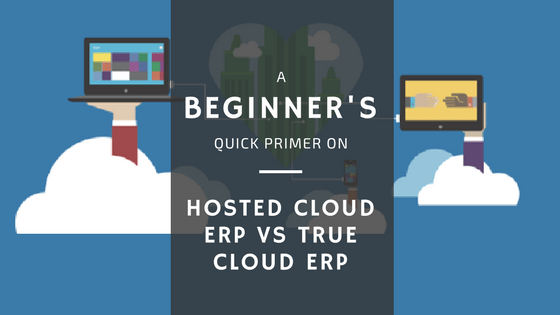In his book ‘The End of Absence’, author Michael Harris suggests that those born before 1985 are placed in a rather unique position.
“If we’re the last people in history to know life before the internet,” he writes, “we’re also the only ones who will ever speak, as it were, both languages. We’re the only fluent translators of Before and After.”
Harris's book was a fascinating read – great for contemplation and the occasional nostalgia trip (email-free weekends, how you're greatly missed). But it also got me thinking of how fast things have changed on the corporate front, especially in Cloud computing.
As consultants, we meet a wide range of SME executives. Many grew up before the Internet started – let alone Cloud computing – and struggle with the idea that information can be safely stored outside their organisations.
Take a look at our Cloud services for ERP solutions
Back then, ‘best-in-class’ meant complex, stand-alone legacy systems. These were powerful. Expensive. Designed for older, bigger companies with the budget to maintain them. And while this mindset made business sense in the pre-Internet days, the same approach makes it challenging for them to quickly adapt, scale, and respond to business changes.
However, executives in SMEs today have an advantage. They can choose between traditional on-premise IT solutions, or newer approaches like Cloud enterprise solutions. In doing so, they can scale faster, respond to change faster, meet new customer needs more easily, and innovate for competitive advantage faster and more easily.
Why More SMEs Are Choosing Cloud ERP
In a study by the Economist Intelligence Unit, more organisations are choosing cloud-based architectures and ERP applications that are accessible via mobile devices.
With a Cloud solution, SME executives don’t need to worry about hard-earned capital being tied up in servers, hardware, backup systems, maintenance, and disaster recovery capabilities.
This means more capital to invest strategically. Like expanding in new markets. Or hiring new people to capitalise on opportunities for growth.
For example, Cloud ERP solutions allow you to:
- Connect your front office with operations so you can centrally manage information and processes – no more spreadsheets and ad-hoc apps that silo information
- Use state-of-the-art processes through outsourced services (like payroll) or apps that are constantly being updated and improved in the Cloud
- Innovate by buying the process support needed for new offerings, business models, and more
- Access management information anytime, anywhere – billing, financial information etc – even via mobile devices
Unlike costly legacy systems of the past, Cloud technologies are not beyond the reach for SMEs today. NetSuite for instance, is a complete ERP software for SMEs that's designed for the Cloud from the ground-up. By choosing a Cloud ERP solution, clients like Tat Chuan Acoustic have seen significant improvements in productivity, reporting, and inventory management – all at affordable costs.
Or take one of our Microsoft Dynamics NAV clients as an example. A popular heritage brand that started in the 1950s, Old Chang Kee Ltd decided to take their operations in the Cloud with us through Microsoft Azure. This gave them greater flexibility and scalability to capture opportunities when they appear.
By starting early in the Cloud, you can position your business for sustainable growth opportunities.
What’s your IT strategy for keeping things simple to support scalable growth?



